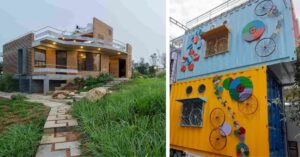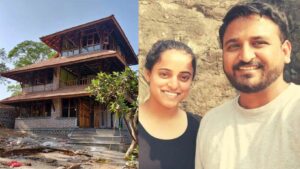‘Mud Isn’t Kaccha’: In Rajasthan, A Regal Farmhouse Stays Naturally Cool in the Desert
Architect Shreya Srivastava and her firm Studio Shunya have designed an eco-friendly mud home and farmhouse that maintains neutral temperatures even in Rajasthan’s harsh climate.
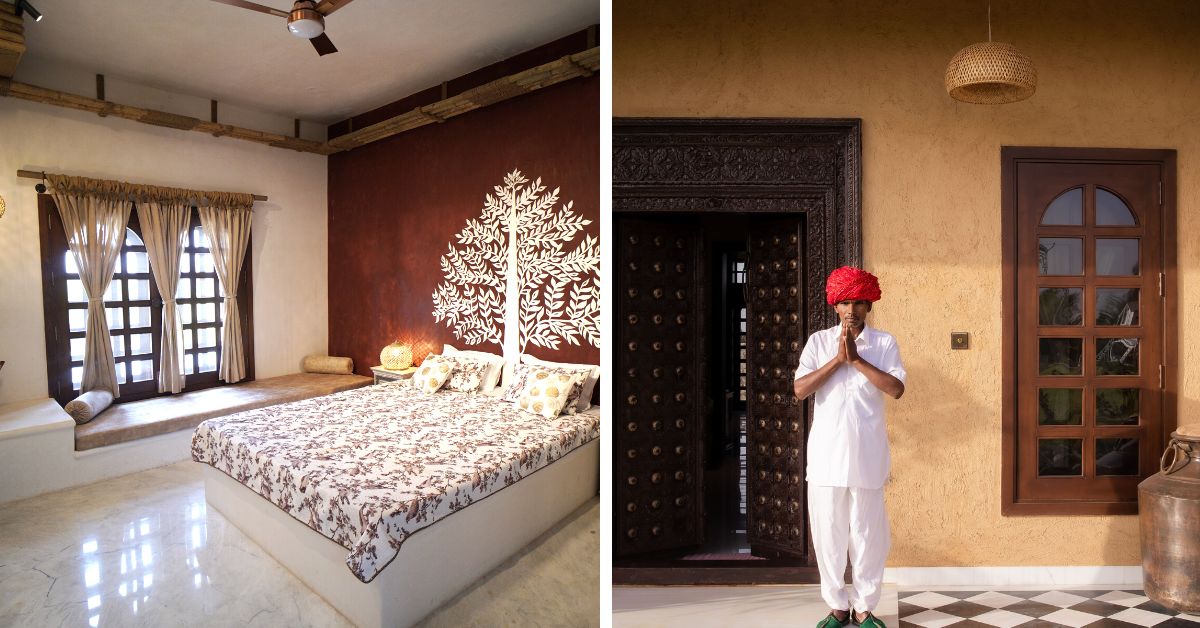
Amidst honey-coloured buildings and havelis that dot the landscape of Chittorgarh, Rajasthan, one home seems to be as though a picture from a postcard.
The building is palatial enough to leave any passerby mesmerised by its appearance. One may even predict that the most luxurious raw materials have gone into the making of this farmhouse. But Shreya Srivastava, architect and founder of Studio Shunya, tells us it’s quite the contrary.
“When I was approached for this fascinating project, I was given the brief to create something that exudes luxury, but at the same time, was an ode to the heritage of Rajasthan,” the 26-year-old tells The Better India.

Her venture, she adds, has always focused on a zero-energy building design. So she was excited at the prospect of the challenge, which was to create a luxury space that was sustainable.
Through the years as an architect, Shreya was faced with the tussle of choosing between stylish facades and adhering to her values of being in tune with the environment.
“I’d come to realise how the cement sector is the third largest industrial source of pollution. The client and I came to the consensus of designing the farmhouse in a way that involved a minimum running cost, while being beautiful,” she adds.
Raunak Jain, the client, is a resident of Chhitorgarh and the director of a construction company. He approached Shreya to design the farmhouse on a one-acre site, and commissioned the 5,500 sq ft farmhouse for Rs 5,000 per sq ft.
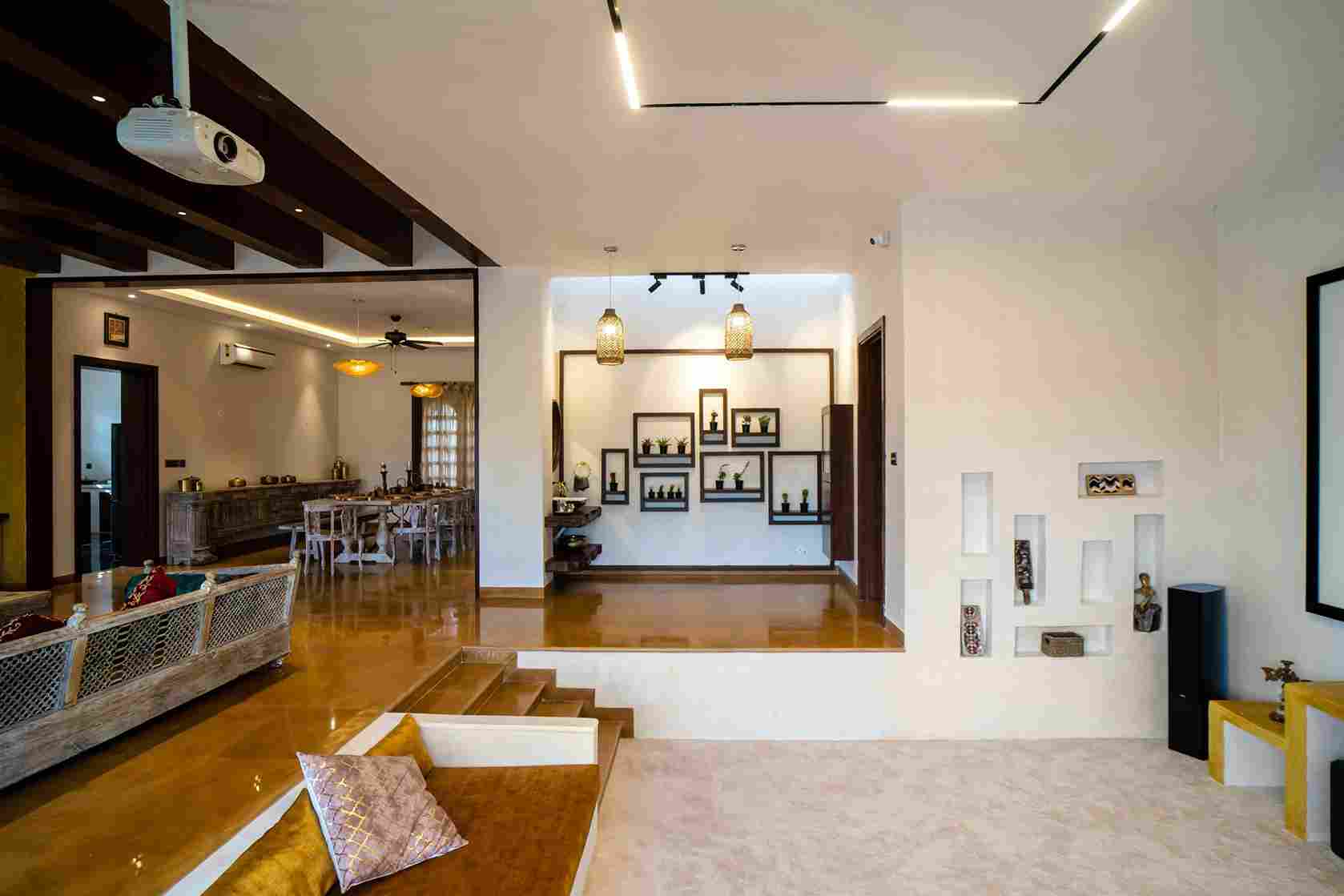
Infusing luxury with sustainability
“A mud home is usually thought of as kaccha,” says Shreya, explaining that this was the notion she wanted to change through the project.
She says the first step was to hire local contractors and masons to use indigenous materials in construction.
“We wanted a mud home. Thus, we have an RCC (reinforced cement concrete)-framed structure that is 80 per cent mud.” Pointing to the walls, Shreya says they have been built using lime plasters.
The architect says the structure only gets stronger with time because the features of lime plaster are enhanced with age. “The material helps maintain preferred humidity levels while also purifying the indoor air,” she adds.

As one admires the walls, they cannot help but notice the beautiful paintings. These have been made by students from the Guru Gobind Singh Indraprastha University in Delhi and are a way of promoting the young talents of the country, she says.
To compliment the art, the furniture is equally aesthetic. “All the furnishings have been made on-site using mud, stone, and brick finished in lime plaster. Some of the pieces have been sourced from Jodhpur havelis, and refurbished and reused,” Shreya says.
Keeping in mind the need to integrate Rajasthan’s culture, the flooring, too, is made of Jaisalmer stone, Udaipur stone, Kadappa stone, and Nimbara stone, and keeps your feet cool while standing or walking. In the dining area stands an elegant table refurbished and sourced from an old Jodhpur haveli.
But what sets the home apart is the araish technique used on a few walls.
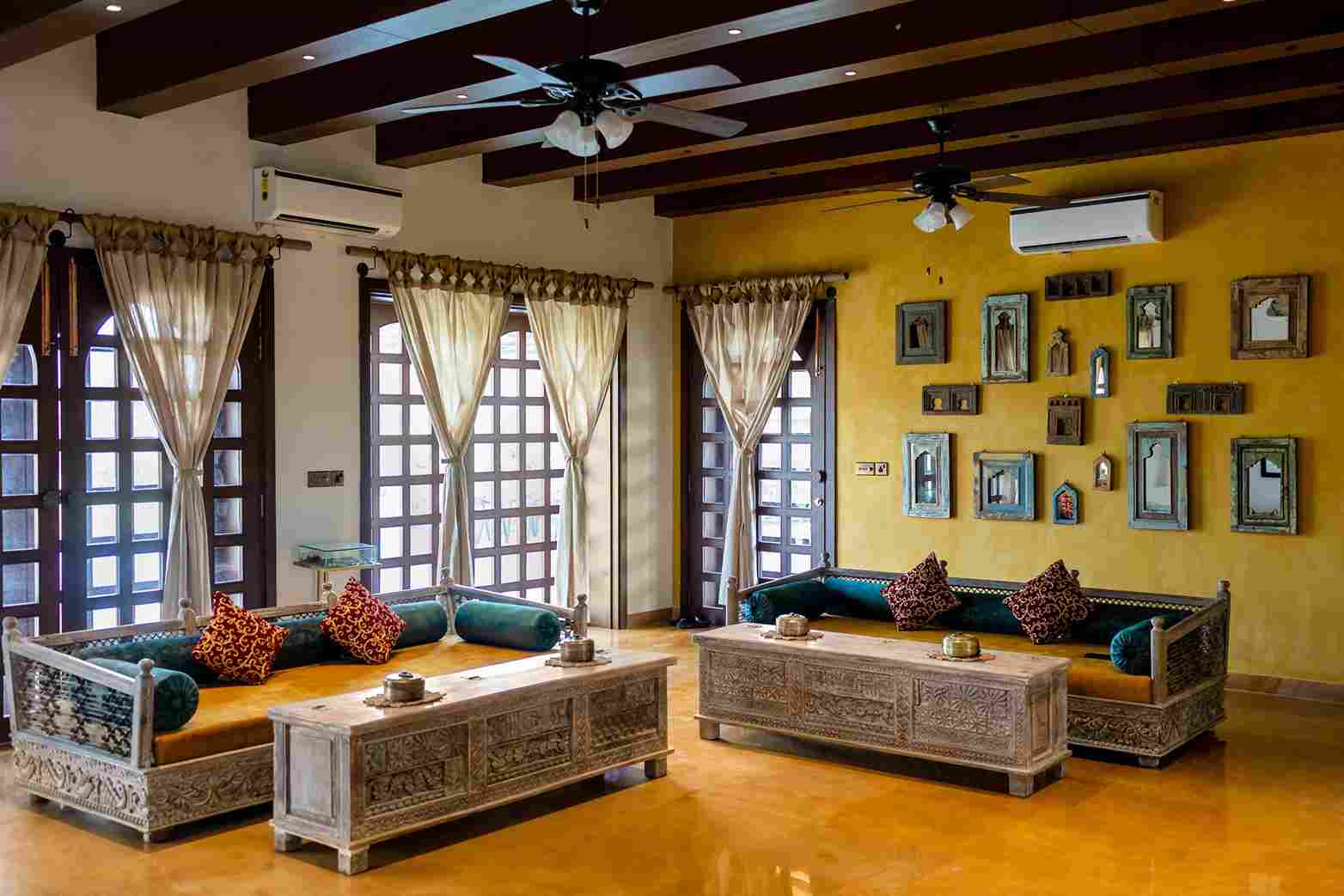
Shreya explains that araish is a finish applied over multiple layers of lime plaster. “It gives a seamless, smooth finish and a marble-like touch.”
She adds that araish is made of slaked lime, brick powder, jute fibre, jaggery, methi water, marble dust, and sand. “Due to the porous nature of lime, it lets moisture flow from the interior of the home to the exterior and vice versa, maintaining a comfortable temperature inside the home.”
Another element of the design that helps keep the home cooler is the thatched roof. “It also adds the touch of vernacular design to the building.”
Modern techniques in sync with the environment
Every evening, the Jain family gets together to spend time or listen to the sounds of dusk. The idea of the farmhouse, they say, has always been to live amid nature and spend hours enjoying the surroundings.
Thus, even when they approached Shreya to design the space, they did so with a request to have maximum nature penetrate the home, with minimal need for electricity, gadgets, etc.

And Shreya was more than happy to oblige.
She explains that to fulfil this request, they employed passive construction techniques.
“The rooms have clerestory windows placed at a height,” she says, adding that this set-up enables diffused light to enter. “The high ceilings also allow greater cooling and ambient temperatures.”
She adds, “The thickness of the mud walls means they have high thermal mass, which helps keep the interiors cool in summers and warm in winters. These earthen walls function as an absorbent mass, store warmth, and reradiate it back into the living space as the mass cools.”
It is evident from her descriptions that planning a sustainable home in a state known for its arid temperatures and harsh climate wasn’t just a challenge, but also required attention to detail.
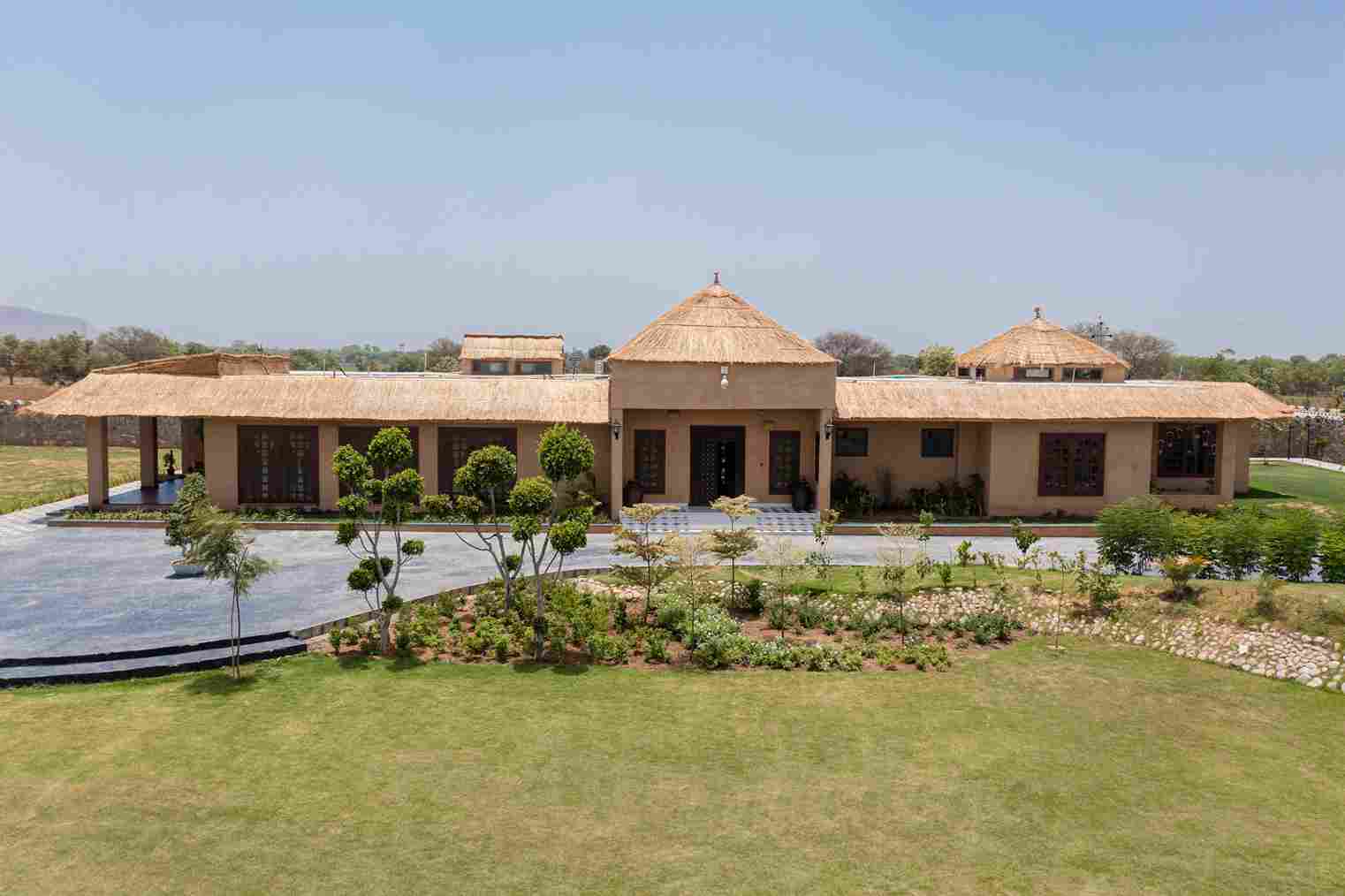
“Everything we did was aimed at keeping the sun away and adding wind to the hot and dry climate of the place,” says Shreya. And another bonus of doing this was minimising electricity needed to cool the home.
In tune with sustainability, the Jain family has also had six solar panels of 330W each installed on the plot to meet 50 per cent of their energy needs
Additional cooling is provided by the carpet of green that extends around the home. Only 20 per cent of the total site area is paved, says Shreya. This was a strategic decision as they wanted water percolation to occur to maintain groundwater table levels.
The home also has a 400 sq ft kitchen garden where the family grows bottle gourd, onions, potato, brinjal, ladyfinger, etc.
Navigating the challenge of green homes
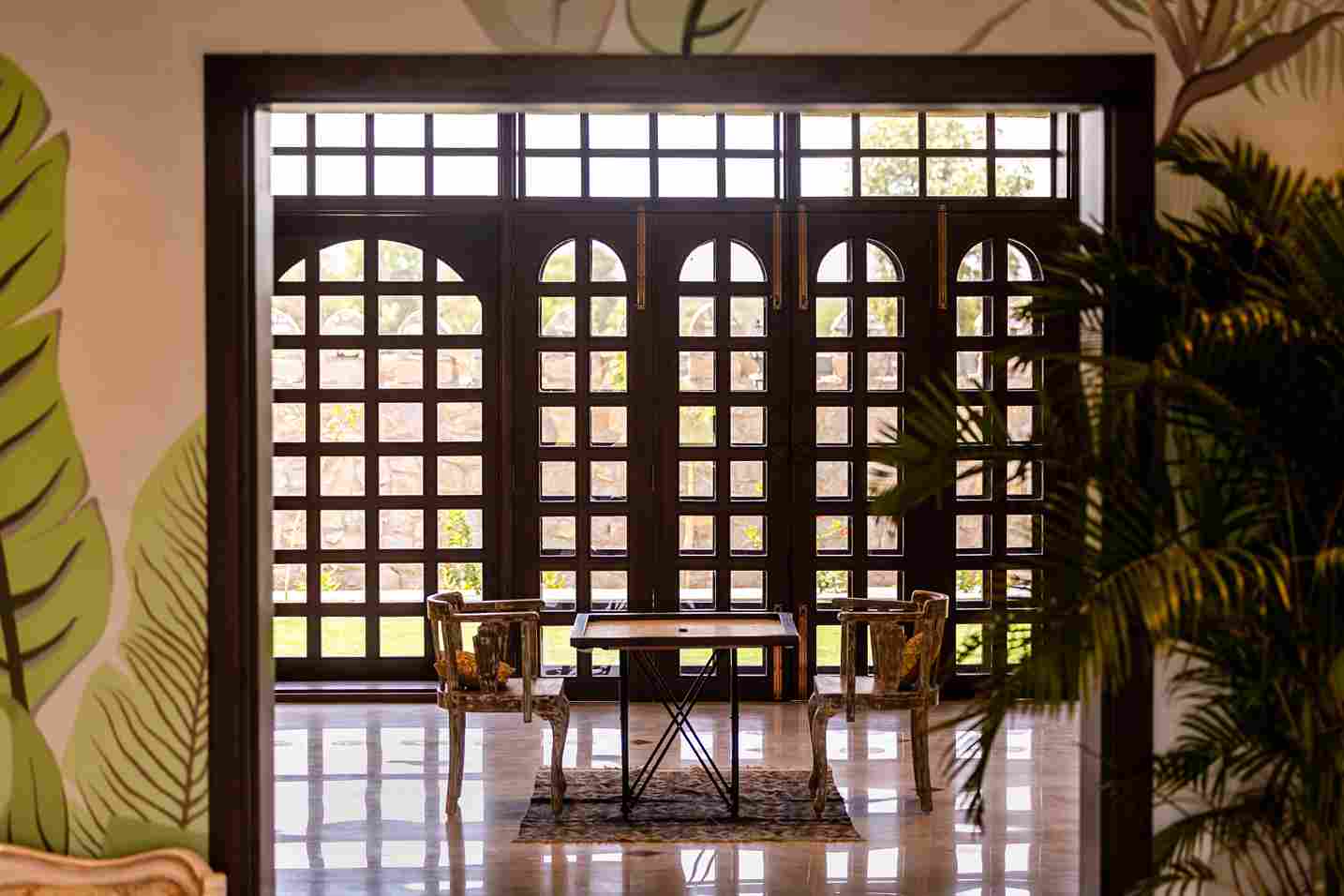
The project, which began in October 2020 and was completed in April 2022, has been a dream come true not just for Shreya, but also for the Jain family, who sees this as their dream home.
Raunak says the idea was inspired by a boutique hotel they saw in Rajasthan. “We immediately wanted to build ourselves something similar, albeit eco-friendly,” he says. “We were looking at something closer to nature, but with a touch of royalty. And that’s exactly what we got.”
He adds that they spend a major part of the week at the farmhouse and that these days feel like living in paradise.
As for Shreya, she says she is grateful for being associated with the project.
“I’ll admit that age-old construction techniques and natural materials only deliver the benefits they promise when they are executed in the right manner,” she says, adding that this was the biggest challenge she encountered.
For all those going in for sustainable homes, she advises not to lose sight of your plan in the face of market hoaxes.
“There are so many materials in the mainstream market that claim to be sustainable, but aren’t. Hence for our project, we sourced materials locally within a radius of 100 km.”
This she says drastically reduced the fuel and energy required for transportation.
“The idea is to always give back to the earth,” she explains. “The house is an example that you don’t have to choose between luxury and sustainability.”
For a consultation, you can reach out to Shreya here.
Edited by Divya Sethu
This story made me
-
97
-
121
-
89
-
167
Tell Us More
We bring stories straight from the heart of India, to inspire millions and create a wave of impact. Our positive movement is growing bigger everyday, and we would love for you to join it.
Please contribute whatever you can, every little penny helps our team in bringing you more stories that support dreams and spread hope.






